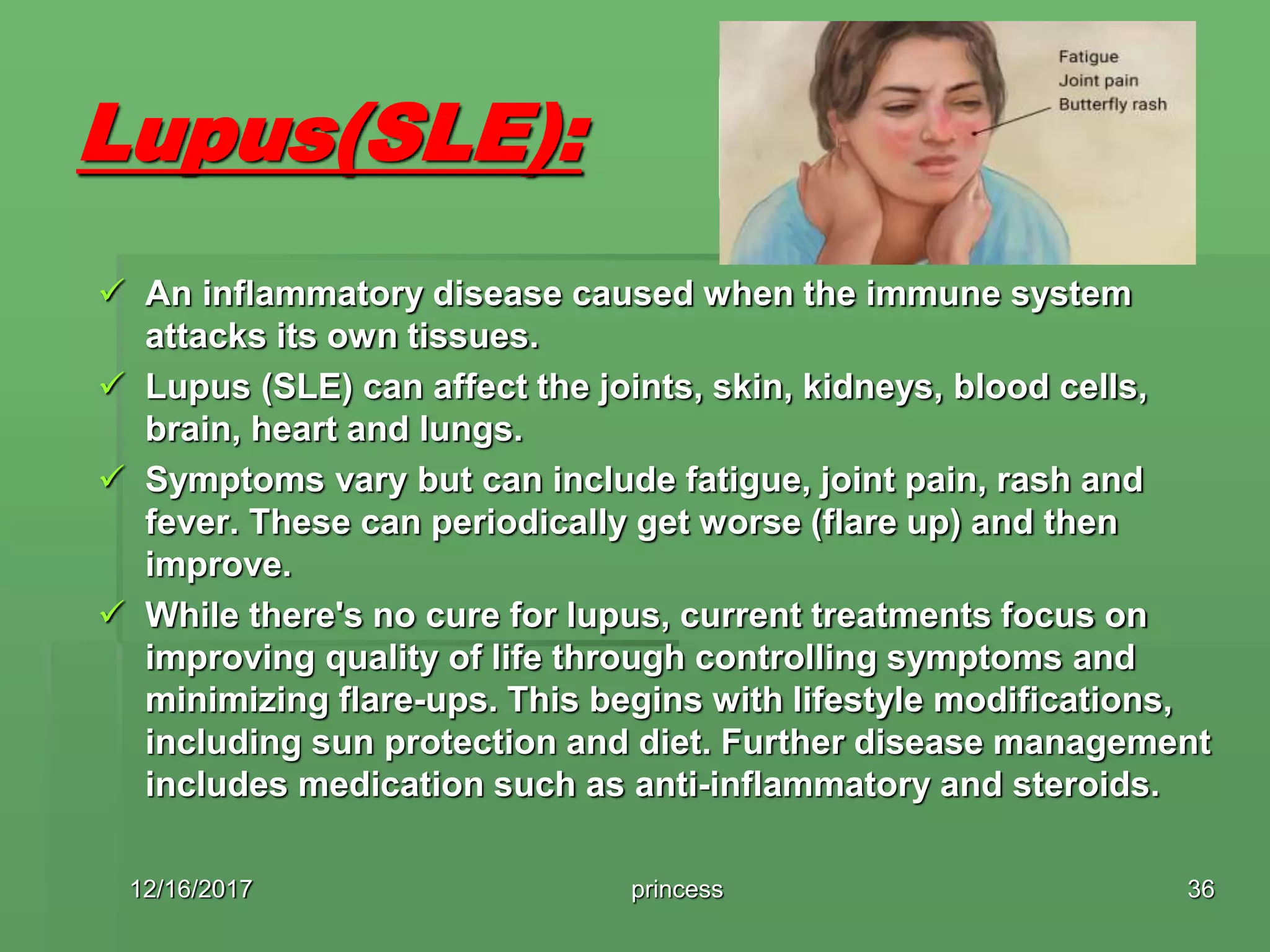The document discusses immunological disorders, categorizing them into three main types: hypersensitivity, autoimmune diseases, and immunodeficiency. It details various hypersensitivity reactions, including their mechanisms and examples, as well as types of autoimmune diseases and their treatments. Additionally, it covers the rejection of transplants and how treatments often involve immunosuppressive drugs and lifestyle modifications.










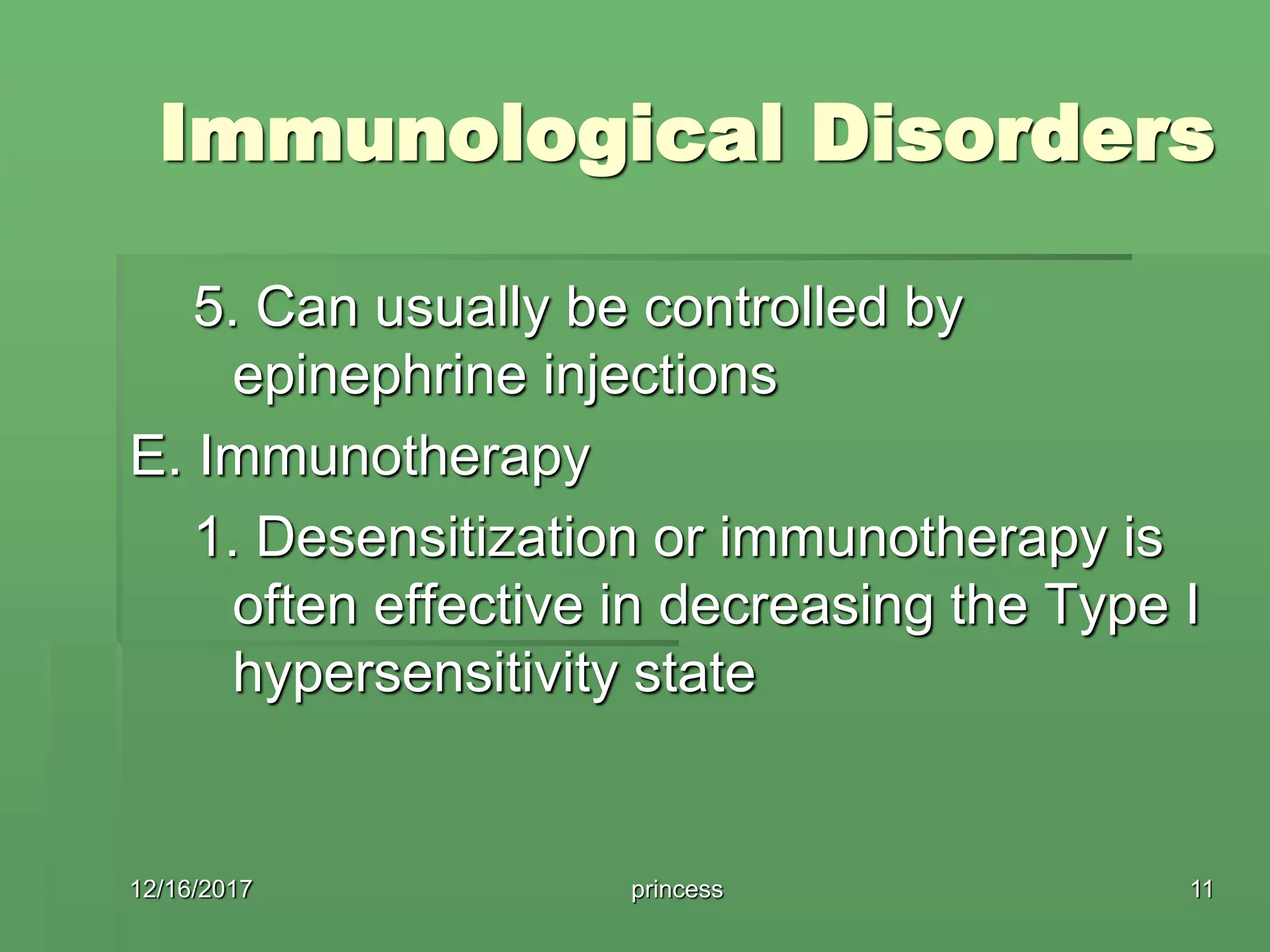
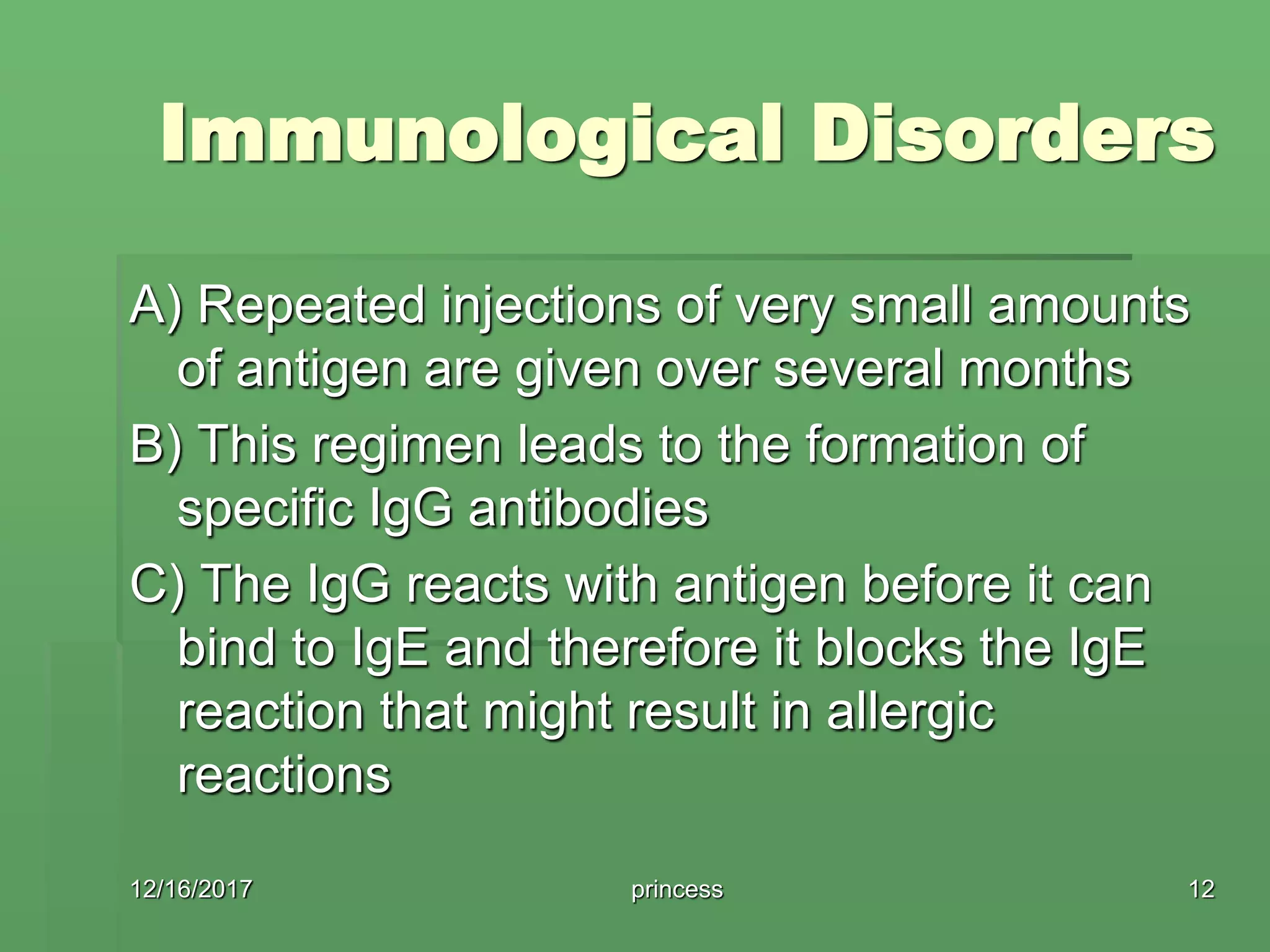


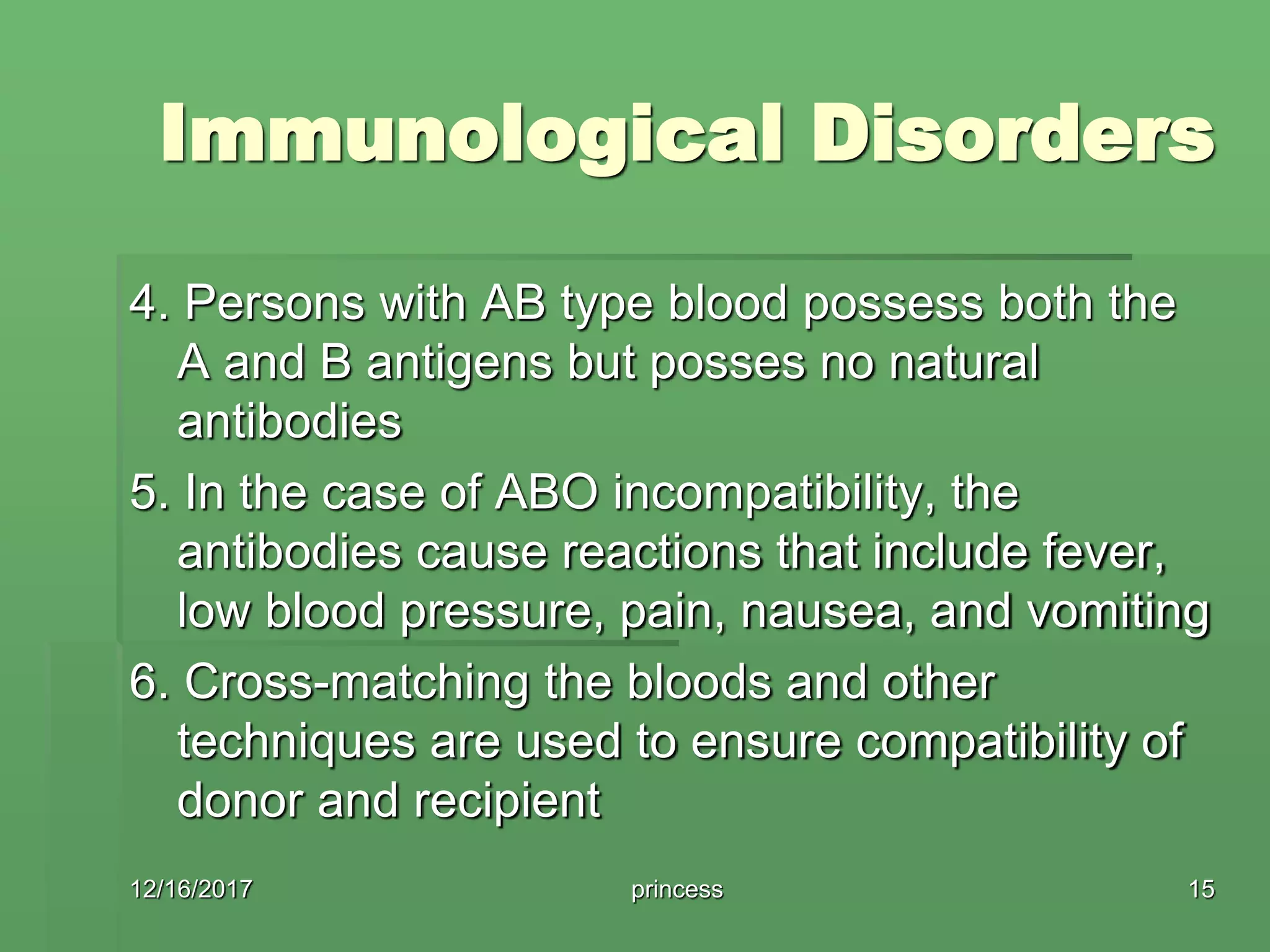


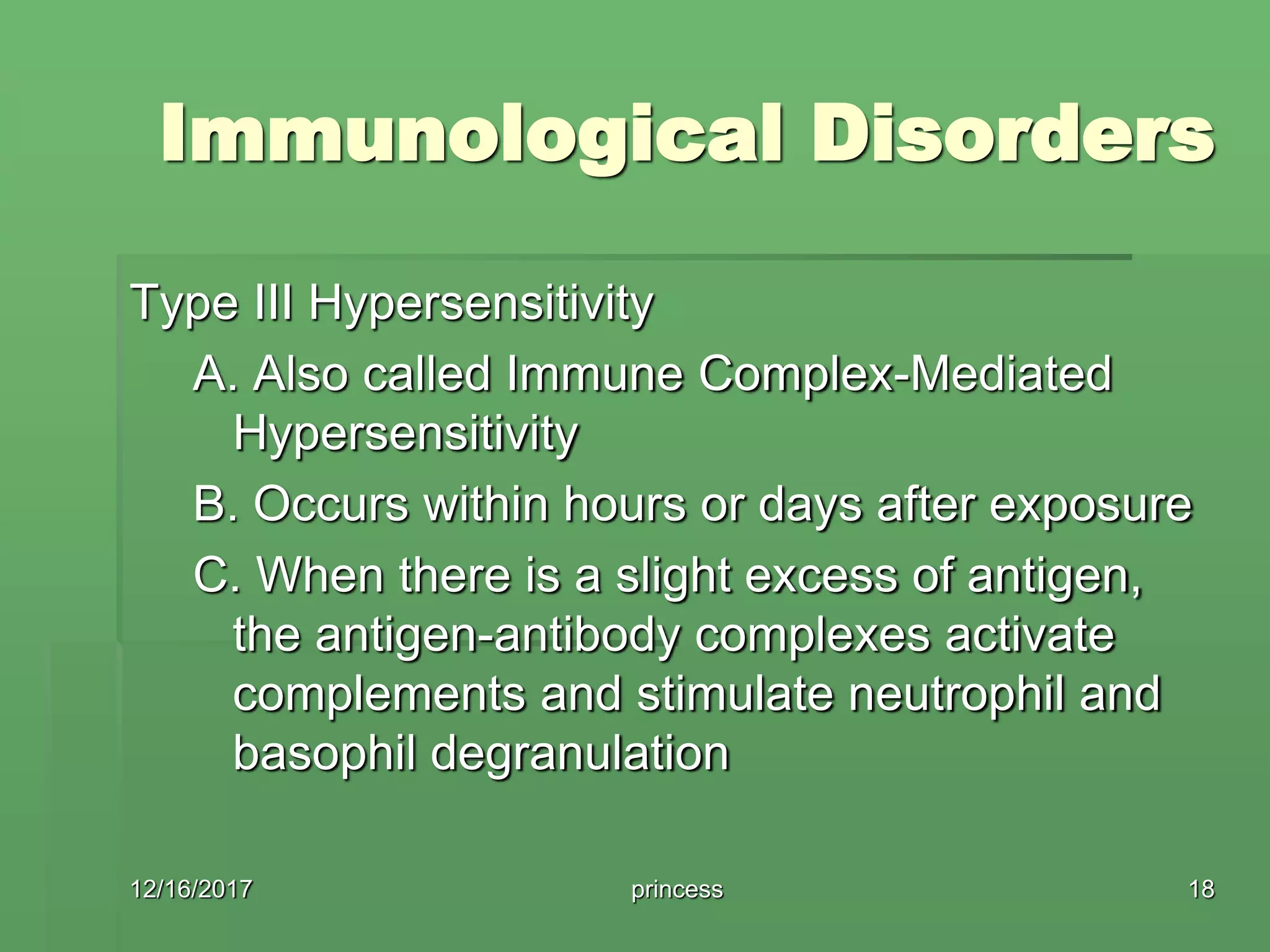

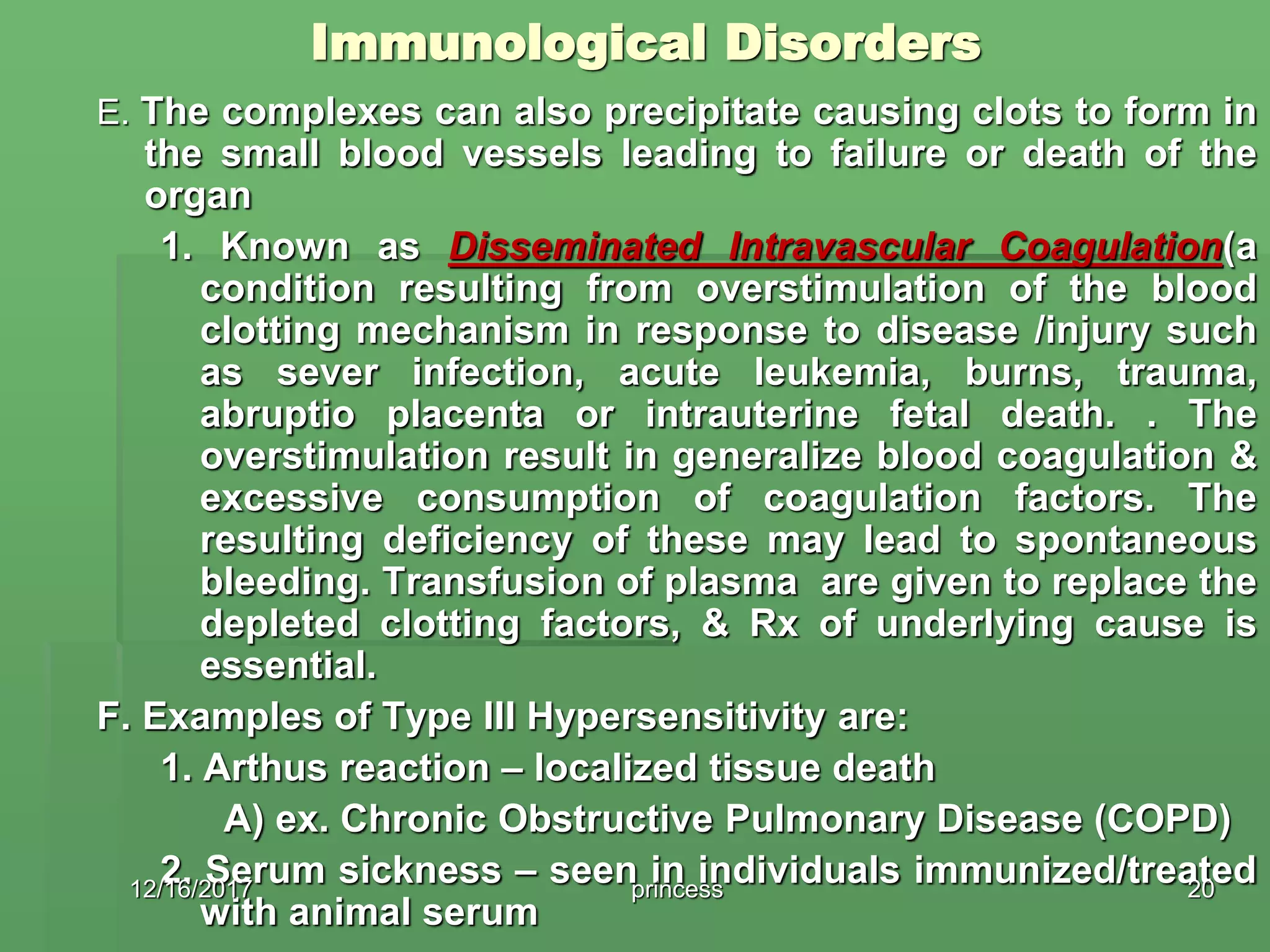




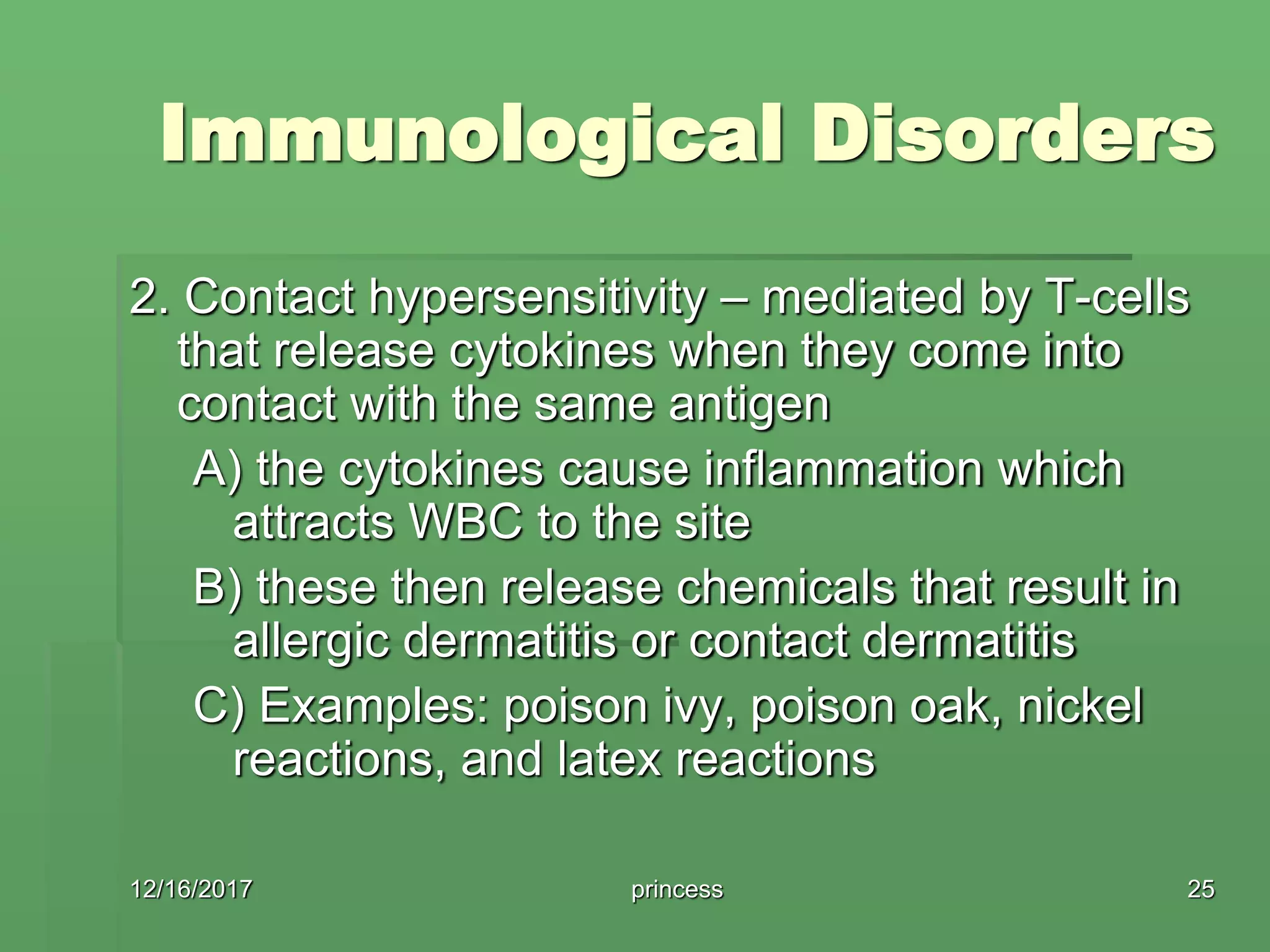
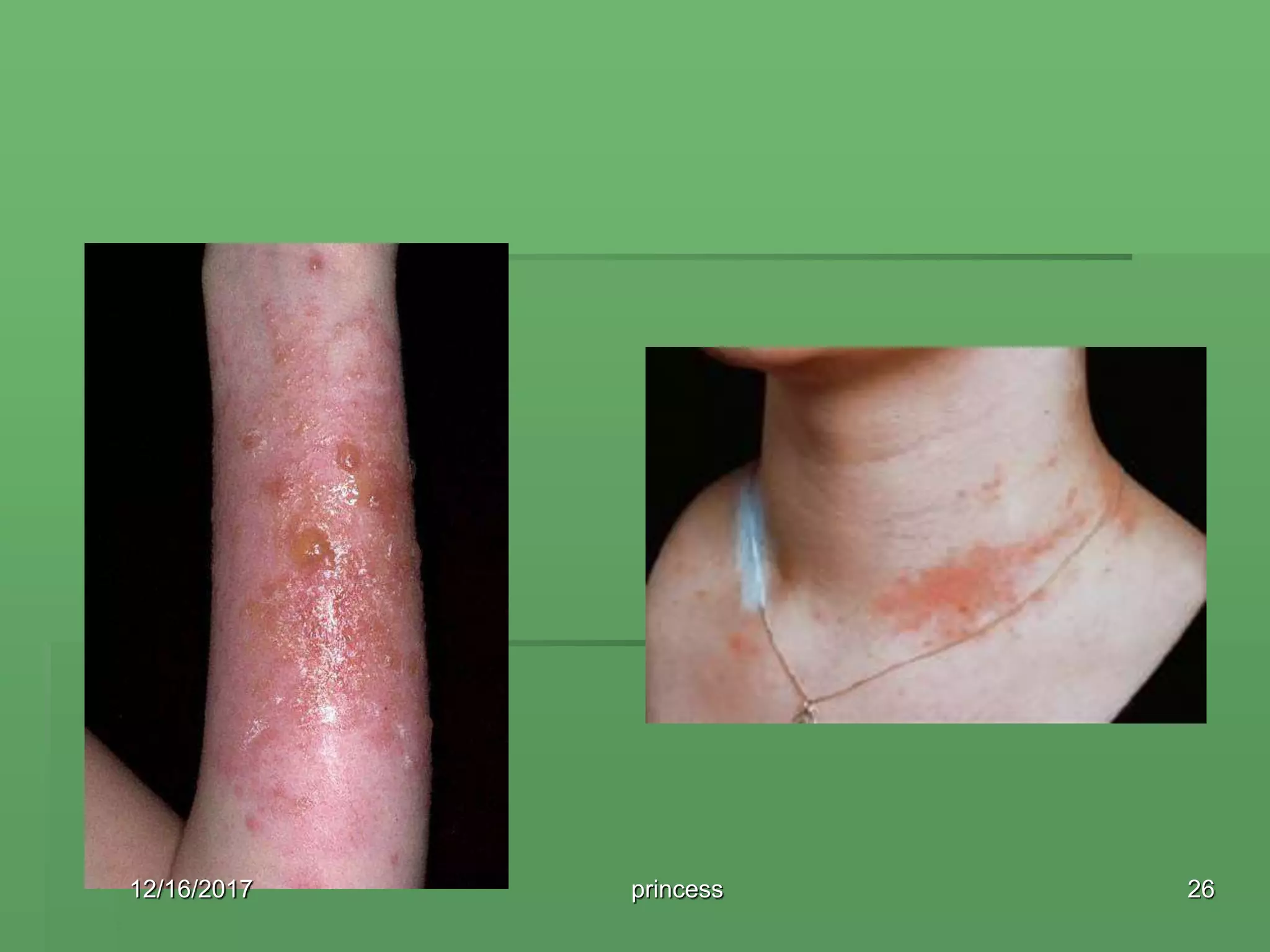




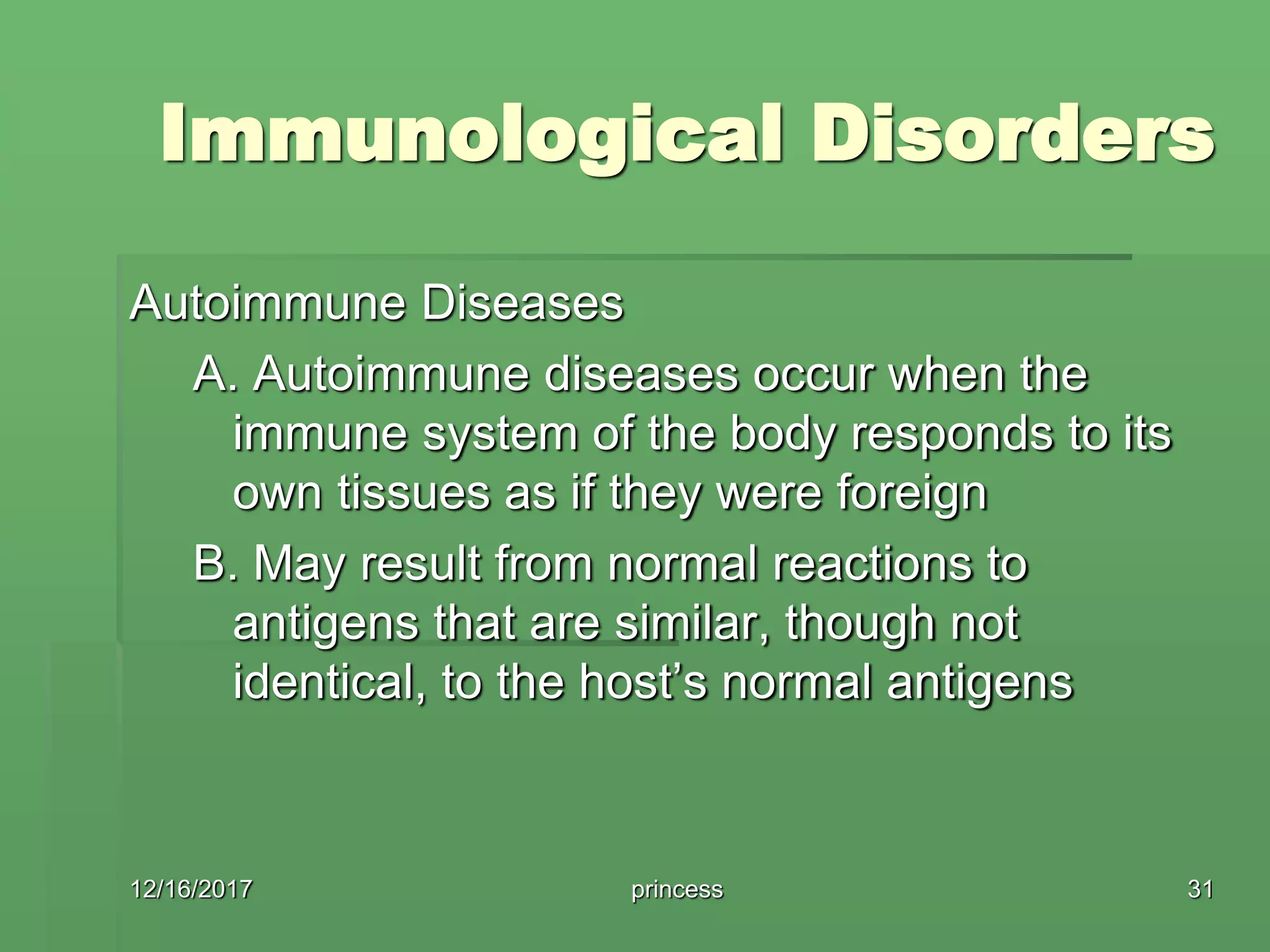


![Graves' disease
The classic finding of exophthalmos and lid retraction in
Graves' disease
Specialty Endocrinology
Symptoms Enlarged thyroid, irritability,
muscle weakness, sleeping
problems, fast heartbeat,
poor tolerance of heat
[1]
Complications Graves' ophthalmopathy
[1]
Causes Unknown
[2]
Risk factors Family history,
other autoimmune diseases
[1]
Diagnostic method Blood
tests, radioiodine uptake
[1][3]
Treatment Radioiodine therapy,
medications, thyroid
surgery
[1]
Frequency 0.5% (males), 3%
(females)
[4]
12/16/2017 princess 34](https://image.slidesharecdn.com/immunologicppt-171216082604/75/Immunologic-Disorders-ppt-34-2048.jpg)

